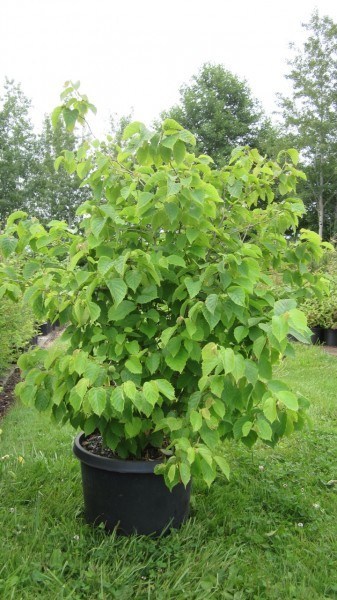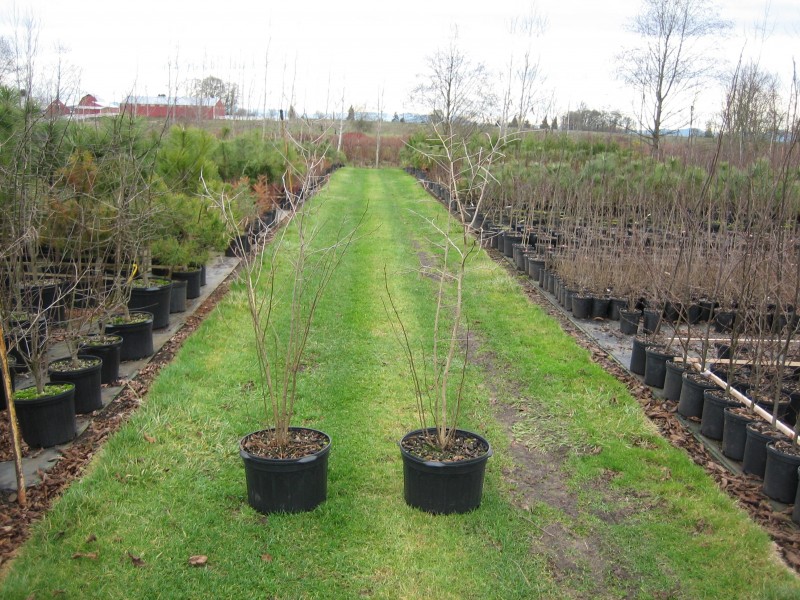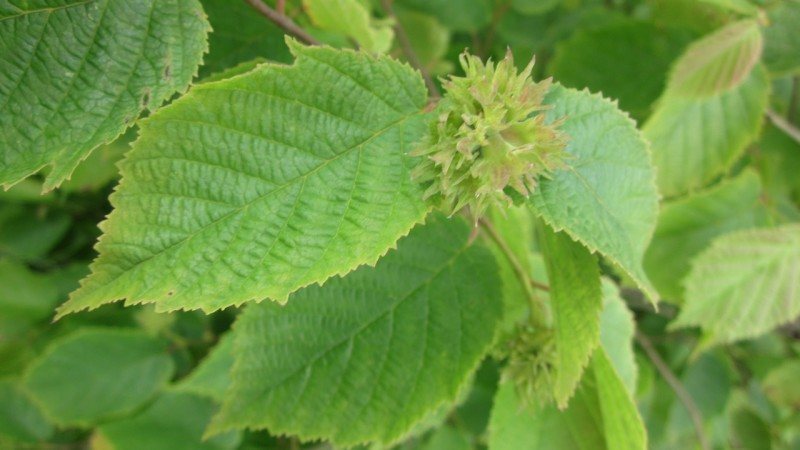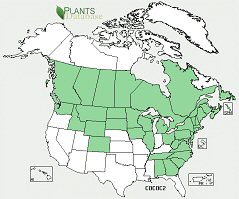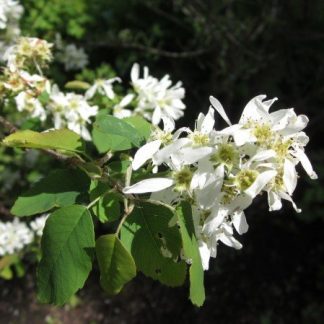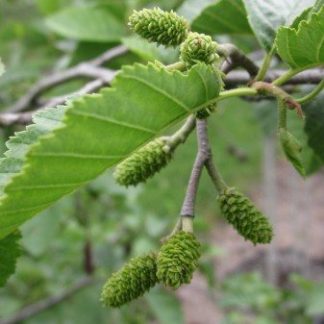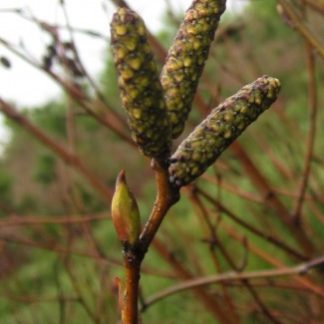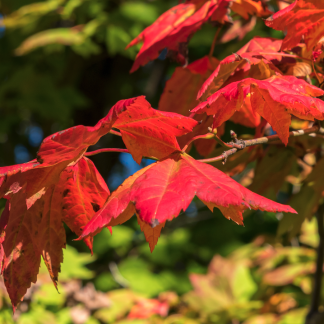Corylus cornuta v. cornuta
beaked hazelnut
Habit: multi-stemmed, mound shaped, deciduous shrub similar to the Western hazelnut although more common and differing in characteristics. Its thin dark green leaves are oval with heart shaped bases, sharp tips and minutely toothed edges. Developing on separate branches male catkins dangle to about 3 in (7cm) while the female flowers are few with tiny threadlike red styles and stigma protruding from gray brown buds. The fruit is a hard edible nut enclosed in a bract that has a long beak, about twice as long as the Western Hazelnut. Blooms in late winter to early spring before the leaves emerge. Leaves turn bright yellow in fall, presenting more of a show than that of the Western Hazelnut.
Ecology: found in dry open forests to moist areas near water. Unlike the Western hazelnut, the beaked hazelnut predominates many ecosystems, especially in those around the Great Lakes Region, and coastal grasslands of the Atlantic Coast. Within its range beaked hazelnut occurs from 300 to 3000 feet (100-1000 m).
Growing Conditions: full sun to full shade, moist to dry well-drained soil.
Fruit is edible.
Always seek advice from a professional before consuming or using a plant medicinally.
Specs
Deciduous Tree/Shrub
13-20 ft (4-6 m)
13-18 ft (4-5 m)
3b-9b

